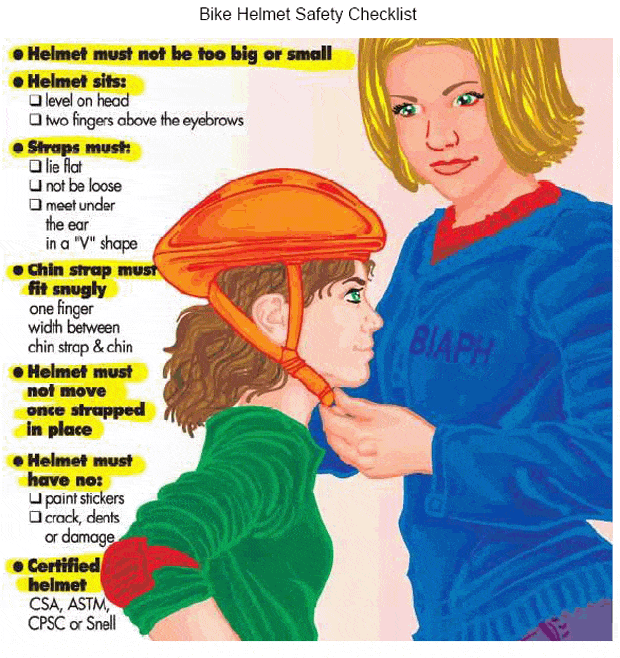
Cycling is popular with people of all ages. Whether it’s a family hobby, a mode of transportation, a way to exercise, or a competitive pastime, cycling can take you through busy city streets or into beautiful natural environments that lie beyond city limits.
Wherever your travels take you, it is important to consider safety as the number one priority. Head injuries are the number one cause of serious injury to kids on bicycles. Wearing a helmet should be just as much a part of your cycling routine as it would be if you were playing a contact sport like hockey or football.
Why We Need to Protect Our Brains
Your brain is your body’s mission control centre. It governs your thoughts, memories, decisions and movements. If your brain is injured, the impact of that injury can reverberate throughout your body. There are injuries to the head we can objectify, like fractures, but there are also injuries that are non-objective, like concussions. Concussions happen when the brain is shaken enough to hit the inside of the skull and get bruised.
Acquired brain injuries can have temporary, prolonged, or permanent repercussions to your everyday life. By using a helmet and practising safe-cycling, you can significantly reduce your chances of sustaining such an injury.
How Helmets Work
A bicycle helmet has two main parts: a hard outer shell and a softer inner liner. The hard shell works to spread the force of the impact over a larger area (which decreases the risk of a skull fracture), while the inner lining of the helmet absorbs the impact energy so less is transmitted to your head. A bike helmet can reduce the risk of serious head or brain injury by as much as 80%.
For a bicycle helmet to work as intended, it needs to be worn properly and fitted correctly. A properly fitted helmet will:
- sit level on the head at a two-finger width above the eyebrows,
- have straps that lie flat and fit snugly around the ears in a “V” shape,
- have a one finger width between the strap buckle and the bottom of the neck/chin area, and
- not move on the head once secured.
Hats, headphones or even big hair clips should not be worn under a helmet since they might alter the fit of the helmet and make it less effective. The top of the helmet should be smooth and free of any objects such as protruding decorative pieces and/or stickers. Bike helmets that have been involved in a previous crash or are damaged must be replaced.
Check out this detailed bike safety checklist by Brain Injury Association of Peel Halton:

The Right Helmet For The Right Activity
Helmets can help protect your head during all sorts of activities, such as skating, skiing, biking and horseback riding. But it’s important to select the proper helmet for your activity since each helmet is designed for the potential impacts of that particular sport.
Skateboarding helmets, for example, cover more of the back of the head than bicycle helmets, and are designed to withstand multiple impacts. While hockey helmets are great for the rink, they are not designed to scrape across pavement like a bicycle helmet. A helmet’s certification sticker should tell you what activities that helmet is suitable for.
Lead By Example
One of the best ways to ensure your child will wear their bike helmet is by wearing one yourself. Research has shown that when parents wear helmets, children are more likely to want to wear them too. Start using helmets as soon as your child starts learning to ride a tricycle or bicycle and keep helmet use consistent.
Physical activity is important for everyone to ensure a healthy lifestyle – and so is personal safety. Whether your sport is cycling, skiing, hockey or football, make sure you reach for that helmet every time.
If you have sustained a serious injury while cycling and have questions about your legal options for personal injuries, please contact Peel Helmets on Kids volunteers at Howie, Sacks & Henry at 877-771-7006.





